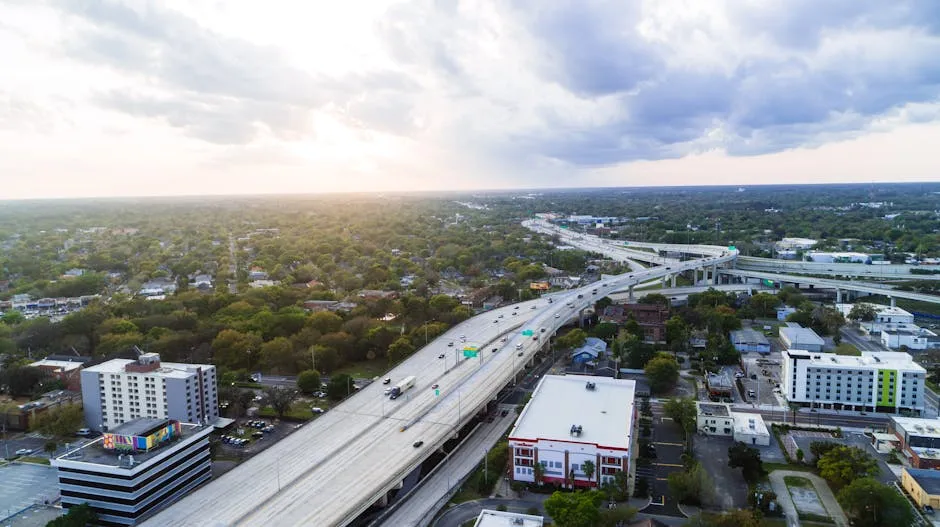Introduction
Welcome to the Sunshine State, where palm trees sway, and tourists flock to soak up the sun! Florida is not just famous for its theme parks and pristine beaches; it also has a unique crime landscape that deserves attention. Understanding Florida crime statistics is crucial for residents and visitors alike. After all, no one wants to find themselves as a headline in the local news!
Crime rates can significantly impact your decisions—whether you’re planning a family vacation or considering a move. Knowing where crime is more prevalent allows you to make informed choices about safety. From beach towns to bustling cities, the crime statistics vary widely across Florida.
This analysis draws from reputable sources, including the FBI and state law enforcement agencies, to offer accurate and recent statistics. The latest data provides a clearer picture of crime trends, helping you understand the nuances of safety in different areas. So, grab a snack, and let’s dive into the numbers!
Understanding Crime Statistics
What Are Crime Statistics?
Crime statistics are numerical figures that represent the frequency of criminal acts within a specific area over a defined period. They are compiled from various sources, including police reports, surveys, and community feedback. These statistics provide a snapshot of how safe or dangerous a place may be.
Crime data is typically categorized into two primary types: violent and property crimes. Violent crimes include serious offenses such as murder, rape, robbery, and aggravated assault. These crimes directly harm individuals and are often the most alarming to residents. On the other hand, property crimes encompass offenses like burglary, larceny-theft, and motor vehicle theft. While property crimes can be distressing, they generally do not involve direct harm to individuals.
Understanding these categories is essential for interpreting crime statistics accurately. It helps residents and visitors grasp what types of crimes are more prevalent in their area and plan accordingly. With this foundation, we can better appreciate the importance of these statistics in making informed decisions about safety and security in our communities.
Importance of Crime Statistics
Why do crime statistics matter? For residents, potential movers, and tourists, this data serves as a key factor in assessing safety. High crime rates can influence everything from housing prices to tourism revenue. When considering a new home, it’s wise to check local crime rates to gauge the safety of the neighborhood.
Crime statistics also impact tourism. A location with a reputation for high crime might deter potential visitors. Conversely, cities known for their safety can attract tourists and boost local economies. Think about it: who wants to be on vacation, only to find themselves dodging trouble?
Real estate professionals often rely on crime statistics to inform their clients. A neighborhood with rising crime rates may see property values decline, while safer areas often experience growth. Community safety initiatives also benefit from crime data; understanding trends helps law enforcement and local organizations implement effective prevention strategies.
In summary, crime statistics are essential for making informed decisions about where to live, work, or visit. They provide valuable insights that can influence personal choices and broader community efforts to foster safety and security.
Florida Crime Overview
Statewide Crime Trends
Florida, known for its beautiful beaches and vibrant culture, also has a unique crime landscape that commands attention. Analyzing crime statistics across the state is essential for residents and visitors. After all, knowledge is power, especially when it comes to safety!
In recent years, Florida has seen a noticeable rise in crime rates. According to the latest data from the Florida Department of Law Enforcement, violent crimes totaled 57,587 in 2022, resulting in a rate of 2.59 incidents per 1,000 residents. This is slightly below the national average, where the rate stands at 2.66. While that might sound promising, let’s not pop the champagne just yet.
Property crimes, on the other hand, have been a different story. With a staggering 348,403 cases reported, Florida’s property crime rate is 15.66 per 1,000 residents, significantly higher than the national average of 12.16. This means that while violent crimes are relatively in check, property crimes are more common, making home security a top priority for Floridians. Consider investing in a Home Security System to keep your peace of mind intact!

When we look at trends over the years, we find that property crimes have increased, raising eyebrows among residents. Factors such as population growth, economic conditions, and drug-related issues might contribute to these unsettling statistics. It’s a dilemma that leaves many wondering how to stay safe in their communities.
In comparison to national averages, Florida’s crime rates reveal a mixed bag. The state ranks 37th in terms of violent crime per capita, showing that while it’s not the safest, it’s not the worst either. However, residents need to remain vigilant, especially in urban areas where crime rates tend to be higher.
Ultimately, understanding these trends is crucial. Whether you’re a local or a tourist, being informed about crime statistics can help you navigate through the Sunshine State with confidence. Just remember to keep your wits about you and maybe invest in a good Ring Video Doorbell!
Major Crime Categories
Violent Crimes
Violent crimes encompass serious offenses that directly harm individuals. In Florida, these include murder, rape, robbery, and aggravated assault. The statistics might sound grim, but they help us understand the landscape of crime in the state.
In 2022, Florida recorded 1,113 murders, which translates to a rate of 0.05 per 1,000 residents. While this number is alarming, it’s essential to note that the national average is slightly higher at 0.06. Rape incidents stood at 6,714, with a rate of 0.30, again below the national average of 0.40.
Robbery, meanwhile, accounted for 7,477 incidents, or a rate of 0.34 per 1,000 residents, while aggravated assault numbers soared to 42,283, translating to a whopping 1.90 per 1,000 residents. This indicates a significant prevalence of assaults, making it crucial for residents to stay aware of their surroundings. A Pepper Spray can be a great companion for personal safety!
When comparing these figures, it seems that Florida’s violent crime rates are relatively comparable to national trends. However, the distribution varies widely across cities. Urban centers like Miami and Jacksonville experience higher rates, while smaller towns tend to be safer havens.
Understanding these crime categories can empower residents. Knowledge of what to look out for and where to be cautious can help everyone feel a little more secure. Stay informed, stay safe, and remember, a little caution goes a long way!
Property Crimes
Property crimes are the bread and butter of crime statistics in Florida. These offenses include burglary, larceny-theft, and motor vehicle theft. With property crimes accounting for a staggering 348,403 incidents in 2022, it’s clear that these issues are widespread.
Burglary alone contributed to 38,594 incidents, resulting in a rate of 1.73 per 1,000 residents. This is a call to action for homeowners to beef up their security measures! Consider installing a Security Camera System to keep an eye on your property.

Larceny-theft, which is the most common property crime, recorded a chilling 279,116 incidents at a rate of 12.55. Finally, motor vehicle theft accounted for 30,693 incidents, a rate of 1.38 per 1,000 residents.
When we compare Florida’s property crime statistics to national averages, it becomes apparent that while the state has a higher overall rate, the breakdown shows specific areas of concern. The national average for burglary is 2.70 per 1,000 residents, which means Florida is in a slightly better position. However, larceny-theft rates are concerning, as they surpass the national average of 14.02.
With property crimes on the rise, it’s essential for residents to take steps to secure their homes and belongings. Installing security systems, using surveillance cameras, and being vigilant can help mitigate the risks. Property crime may be prevalent, but with the right precautions, it can be managed effectively. Stay alert, and keep your treasures safe!
Crime Statistics by City
Cities with the Highest Crime Rates
When it comes to crime in Florida, not every city can bask in the glow of the Sunshine State. Some cities, unfortunately, have made a name for themselves in the crime statistics department. Let’s take a closer look at the cities where crime is as common as flip-flops on the beach.
- Lake City
- Violent Crime Rate: 77.59 incidents per 1,000 residents.
- Population: Approximately 12,329.
- Lake City is notorious for its high crime rate, with a poverty rate of around 30%. This combination can lead to desperate measures.
- Riviera Beach
- Violent Crime Rate: 62.2 incidents per 1,000 residents.
- Population: About 35,000.
- This coastal city has faced challenges with violent crime, particularly high murder rates—seven times the national average!
- Cocoa
- Violent Crime Rate: 61 incidents per 1,000 residents.
- Population: Roughly 19,000.
- Cocoa struggles with burglaries and assaults, making it a hotspot for crime.
- Panama City
- Violent Crime Rate: 50.3 incidents per 1,000 residents.
- Population: Nearly 34,000.
- Situated in Bay County, Panama City has higher-than-average crime rates, prompting residents to be more cautious.
- Jacksonville
- Violent Crime Rate: 54.7 incidents per 1,000 residents.
- Population: Over 900,000.
- As Florida’s largest city, Jacksonville faces challenges from crime, especially in certain neighborhoods.

These cities are grappling with various issues that contribute to their high crime rates. Factors such as poverty, social disorganization, and limited access to resources play significant roles. To visualize these statistics, here’s a table summarizing key data:
| City | Population | Violent Crime Rate (per 1,000) |
|---|---|---|
| Lake City | 12,329 | 77.59 |
| Riviera Beach | 35,000 | 62.2 |
| Cocoa | 19,000 | 61 |
| Panama City | 34,000 | 50.3 |
| Jacksonville | 900,000 | 54.7 |
Understanding these crime statistics is vital for potential residents and visitors. While Florida has many beautiful attractions, it’s crucial to stay informed about safety. Striking a balance between enjoying the state’s offerings and being aware of your surroundings will ensure a more enjoyable experience. Consider carrying a Personal Alarm for added safety!
Cities with the Lowest Crime Rates
On the flip side, Florida is home to some cities where crime is nearly as rare as snow in July. These cities boast low crime rates, making them ideal for families and anyone seeking peace of mind. Here are a few shining examples:
- Marco Island
- Violent Crime Rate: 0.39 incidents per 1,000 residents.
- Population: Approximately 18,124.
- Known for its beautiful beaches, Marco Island is also recognized as one of the safest cities in Florida.
- Parkland
- Violent Crime Rate: 0.26 incidents per 1,000 residents.
- Population: Around 35,244.
- Parkland stands out for its low crime, thanks to a strong community and engagement among residents.
- Weston
- Violent Crime Rate: 0.46 incidents per 1,000 residents.
- Population: About 71,946.
- This affluent community prioritizes safety and has made impressive strides in keeping crime at bay.
- Windermere
- Violent Crime Rate: 0.51 incidents per 1,000 residents.
- Population: Roughly 3,038.
- Windermere is a small but affluent community that enjoys low crime rates, making it attractive for families.
- Sewall’s Point
- Violent Crime Rate: 0.55 incidents per 1,000 residents.
- Population: Approximately 1,994.
- This picturesque town is known for its scenic views and tranquil lifestyle, further enhanced by its safety.

Here’s a table summarizing these safe havens:
| City | Population | Violent Crime Rate (per 1,000) |
|---|---|---|
| Marco Island | 18,124 | 0.39 |
| Parkland | 35,244 | 0.26 |
| Weston | 71,946 | 0.46 |
| Windermere | 3,038 | 0.51 |
| Sewall’s Point | 1,994 | 0.55 |
Factors contributing to these low crime rates include higher socioeconomic status, active community involvement, and effective policing. Residents in these cities often enjoy a sense of security that allows them to focus on enjoying life rather than worrying about crime. If you plan to visit these areas, don’t forget your Beach Umbrella to enjoy the sunny days safely!
In conclusion, Florida has its share of both high-crime and low-crime cities. Understanding these statistics can help you make informed decisions about where to live or visit. Whether you’re looking for vibrant nightlife or peaceful surroundings, there’s a slice of Florida for everyone!
Comparative Analysis
When it comes to crime rates in Florida, not all cities are created equal. Some cities shine brightly on the safety scale, while others seem to be stuck in a perpetual thunderstorm of crime. Let’s break down the differences between high-crime and low-crime cities and uncover any noticeable trends.
In Florida, cities like Lake City, Cocoa, and Riviera Beach consistently make headlines for their high crime rates. For example, Lake City boasts a staggering violent crime rate of 77.59 incidents per 1,000 residents. That’s more than enough to make anyone think twice before setting foot there! These cities often grapple with challenges like poverty and limited resources, which can exacerbate crime rates.
On the flip side, we have cities like Marco Island and Parkland, where crime is as rare as a snowstorm in Miami. Marco Island, for instance, reports a mere 0.39 incidents of violent crime per 1,000 residents. It’s a haven for those who prefer to keep their worries at bay—literally!
So, what trends can we identify from this comparative analysis? One glaring observation is that urban areas tend to have higher crime rates compared to suburban or rural settings. Cities with larger populations often experience increased social interactions, leading to a higher likelihood of criminal activities. In contrast, smaller cities and towns often benefit from tight-knit communities and lower population density, resulting in safer environments.

Another fascinating trend is the relationship between socioeconomic factors and crime rates. In high-crime cities, there is often a correlation between elevated poverty levels and crime. Lake City, with its 30% poverty rate, is a classic example. Meanwhile, cities with higher median incomes, like Weston and Parkland, enjoy lower crime rates, showcasing the benefits of economic stability.
Moreover, the types of crimes reported vary significantly between high-crime and low-crime cities. High-crime areas often see a higher prevalence of violent crimes, such as robberies and assaults, while low-crime cities report more property-related incidents. This discrepancy can often be attributed to the availability of resources and community programs aimed at crime prevention.
Overall, understanding these comparative crime rates can help residents and visitors alike navigate the Sunshine State more safely. Whether you’re looking to relocate or planning your next holiday, being informed about crime statistics is your best bet for a fun and secure experience in Florida. So, keep your eyes peeled, and maybe stick to those sunny, low-crime areas!
Factors Influencing Crime Rates
Demographic Factors
Population density, socioeconomic status, and education levels play pivotal roles in shaping crime rates across Florida. The Sunshine State is a melting pot of diverse communities, and these demographic factors significantly influence safety.
Let’s start with population density. In densely populated urban areas, social interactions are frequent, leading to increased competition for resources. This competition can sometimes result in higher crime rates. For instance, cities like Miami and Jacksonville experience more crime due to their bustling populations. It’s like trying to find a parking spot at the beach on a sunny Saturday—frustrating and rife with conflict!
Next up is socioeconomic status. Areas plagued by poverty often see higher crime rates. Limited access to education, healthcare, and employment opportunities creates a breeding ground for criminal activity. For example, Lake City, with a poverty rate of around 30%, struggles with high crime rates, while affluent cities like Weston enjoy a safer reputation. Money may not buy happiness, but it sure can buy a lower crime rate!
Education levels also contribute significantly to crime statistics. Higher education rates correlate with lower crime rates, as educated individuals often have better job prospects and understanding of the law. Communities that prioritize education, such as Parkland, tend to experience lower crime rates, demonstrating the importance of investing in learning.
Additionally, cultural factors and community cohesion play essential roles in shaping crime rates. Areas with engaged residents and active community programs typically enjoy lower crime rates. Neighborhood watch groups, local events, and active law enforcement partnerships can help foster a sense of safety. When residents come together, they create a formidable barrier against crime.

In conclusion, demographic factors greatly influence crime rates in Florida. Understanding these factors can help residents and visitors make informed decisions about where to live or travel. After all, knowledge is power—especially when it comes to staying safe in the Sunshine State!
Law Enforcement and Community Programs
Local law enforcement agencies and community programs are at the forefront of combating crime in Florida. These entities work tirelessly to create safer neighborhoods and reduce criminal activity. Let’s dive into how they’re addressing crime and share some successful initiatives along the way.
Law enforcement agencies play a crucial role in maintaining safety. They employ a variety of strategies to deter crime, including increased patrols, community outreach, and crime prevention programs. For instance, cities like Parkland have implemented community policing initiatives, fostering relationships between officers and residents. This approach enhances trust and encourages collaboration, creating a safer environment for everyone.
Moreover, community programs often provide valuable resources to combat crime. After-school programs, youth mentorship initiatives, and drug prevention campaigns can make a significant difference, especially in high-crime areas. For example, in Cocoa, local organizations have established after-school programs to engage youth and deter them from criminal activities. Providing a safe space for kids to learn and grow can lead to lasting positive change.
In addition to youth programs, Florida cities have also embraced technology to enhance safety. Smart policing initiatives leverage data analytics to identify crime hotspots and allocate resources effectively. For instance, Miami has adopted predictive policing methods to anticipate criminal activities and deploy officers accordingly. This proactive approach can reduce crime rates and improve community safety.
Successful initiatives are not limited to urban areas. Rural communities, such as Marco Island, benefit from community engagement programs that promote neighborhood watch schemes. These programs empower residents to take an active role in maintaining safety, fostering a sense of ownership and responsibility.
Ultimately, law enforcement and community programs are vital in shaping crime rates across Florida. By collaborating with residents and utilizing innovative strategies, they create safer communities where everyone can thrive. As the saying goes, it takes a village—and in this case, it takes a dedicated community to keep crime at bay!
FAQs
What city in Florida has the highest crime rate?
Lake City holds the title for the highest crime rate in Florida, with a violent crime rate of 77.59 incidents per 1,000 residents.
What city in Florida has the lowest crime rate?
Marco Island boasts the lowest crime rate, featuring a remarkably low violent crime rate of just 0.39 incidents per 1,000 residents.
How do Florida’s crime rates compare nationally?
Florida ranks 37th among U.S. states for crime rates. This means it has fewer incidents of crime per capita than 36 other states, indicating that while crime exists, it’s not the worst off in the nation.
Where can I find more information about crime in Florida?
For reliable crime data, check resources like the Florida Department of Law Enforcement (FDLE), the FBI’s Uniform Crime Reporting Program, and NeighborhoodScout. These platforms provide comprehensive crime statistics and insights into trends across Florida.
Please let us know what you think about our content by leaving a comment down below!
Thank you for reading till here 🙂 If you’re planning any outdoor adventures, don’t forget to pack a Portable Phone Charger and some First Aid Kit for safety!
All images from Pexels




